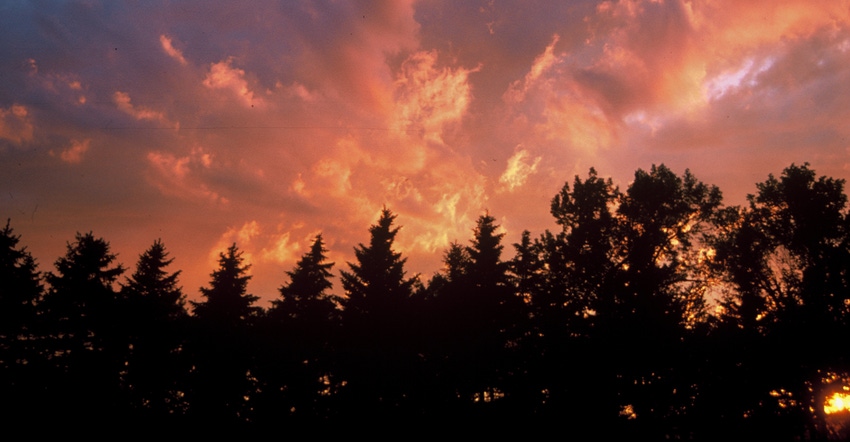
Odds are high that spring in the Dakotas will again be wetter and cooler than normal, with a higher-than-normal risk of a late spring frost or freeze, according to Mark Ewen, a meteorologist with Home on the Prairie Weather in Grand Forks, N.D. Ewen spoke the recent Northern Ag Expo held in Fargo, N.D.
The weather pattern is a continuation of the wet cycle that has been in place since the early 1990s, according to Ewens, who is also a longtime National Weather Service meteorologist.
The weather pattern is being fueled and steered by warmer than average sea surface temperatures in the Indian and Pacific Oceans, Ewen said. The warmer the water, the more humidity and energy is pumped into the air. The result are thunderstorm complexes as large as the continental U.S. that surge east and north on a river of wind.
The weather in the Northern Plains cycles regularly, noted Rob Kupec, a meteorologist with KVRR-TV, Fargo, who also spoke at the Northern Ag Expo. The current wet cycle, which began in 1993, has lasted longer than usual.
The climate in the Dakotas is changing, he said. Whether all the change is manmade and could be significantly mitigated by humans is debatable. But records show that nighttime temperatures have generally been higher than they used to be. The growing season is nearly two weeks longer than 20 to 30 years ago. There’s more precipitation and more of it comes all at once in the form of heavy rains or snowstorms.
Climate change isn’t all bad news for the Dakotas, Kupec said. While it has created challenges, it has also created opportunities. Most years, corn and soybeans can be grown successfully further north and west than ever before. Which crops will be next, Kupec wonders?
The challenge is figuring out how to survive “the deluges,” he said.
About the Author(s)
You May Also Like






